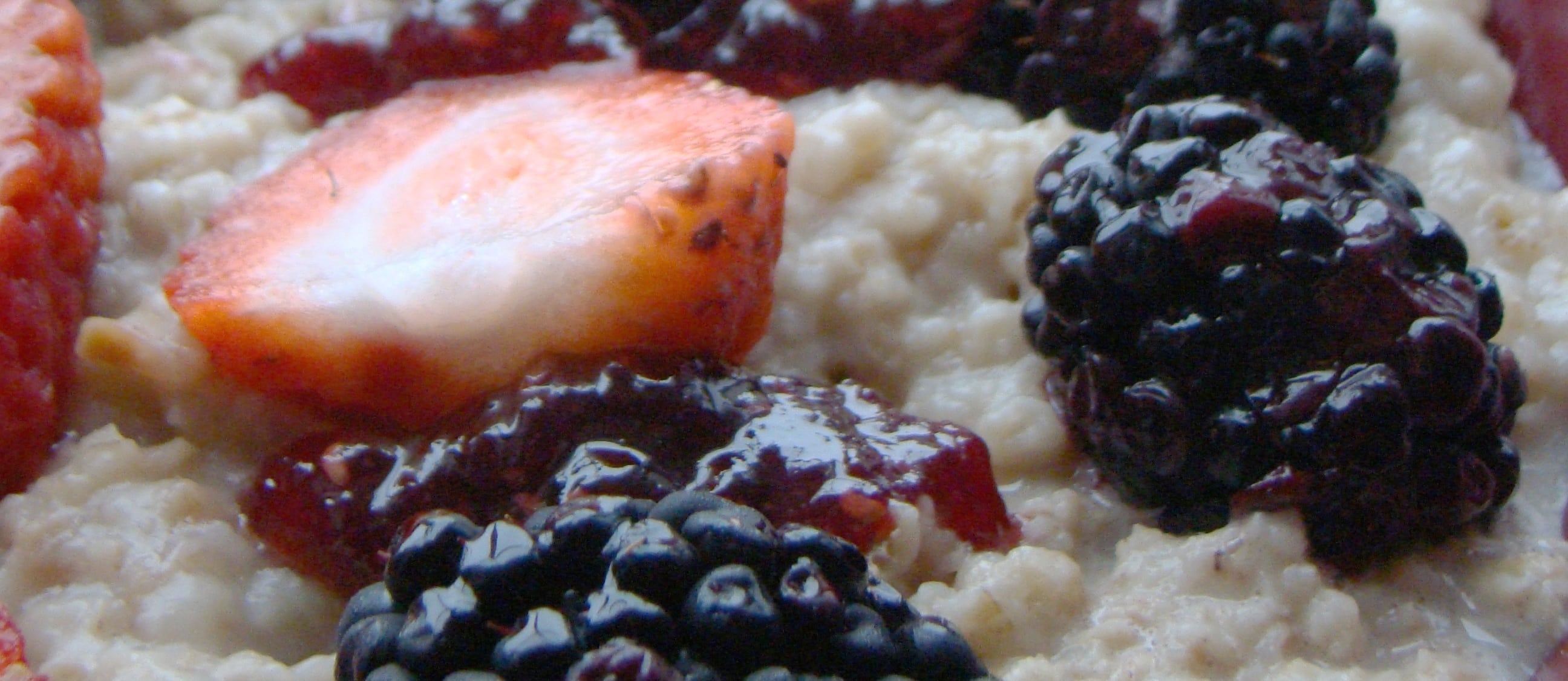After we eat, our bodies create free radicals in the process of breaking down our food. That’s why we need to eat antioxidant-rich foods with every meal to counteract this oxidation caused by metabolism. We can’t just have berries on our oatmeal in the morning to meet our Minimum Recommended Daily Allowance of Antioxidants and call it a day. Each and every meal should contain high antioxidant foods, which means that each and every meal should contain whole plant foods. Antioxidant rich foods originate from the plant kingdom, due to the thousands of different natural antioxidant compounds naturally created by the plants we eat.
Consuming fruits—which are high in phenolic phytonutrients—increases the antioxidant capacity of the blood. When fruits are consumed along with high fat and refined carbohydrate “pro-oxidant and pro-inflammatory” meals, they may help counterbalance their negative effects. Given the content and availability of fat and sugars in the Western diet, regular consumption of phenolic-rich foods, particularly in conjunction with meals, appears to be a prudent strategy to maintain oxidative balance and health.
And of all fruits, berries may be the best source of phytonutrients. In the video, How to Reach the Antioxidant “RDA”, you can see an example of the spike in oxidation caused by a Mediterranean meal of pasta, tomato sauce, olive oil, and fried fish. Obviously, given the spike of oxidation, there were not enough tomatoes. Add a glass of red wine, which contains berry phytonutrients from grapes, and we can bring down, but not blunt completely, the level of oxidation. So the meal needs even more plants.
In a study I profile in the video, researchers gave subjects standard breakfast items, resulting in lots of oxidized cholesterol in their bloodstream one to six hours after the meal. But all it took was a cup of strawberries with that same breakfast to at least keep the meal from contributing to further oxidation. In my Food Antioxidants and Cancer video, you can see a comparison of breakfast with berries versus breakfast without.
If we don’t consume high-antioxidant plants with breakfast, by lunch we’ll already be in oxidative debt. Let’s say we ate a standard American breakfast at 6 a.m. If we didn’t eat that cup of strawberries with breakfast, by the time lunch rolls around we’d already be starting out in the hyper-oxidized state, and lunch could just make things worse. Since western eating patterns include eating multiple meals a day, including snacks, one can only speculate on the level of biological unrest.
If we have some berries for breakfast, at least we’d be starting out at baseline for lunch. This acute protection is likely due to the antioxidant effects of the strawberry phytonutrients. What if, by lunch, we could be even better than baseline? How about our meals actually improving our antioxidant status?
If, for example, we eat a big bunch of red grapes with our meal, the antioxidant level of our bloodstream goes up and our bodies are in positive antioxidant balance for a few hours. We get the same result after eating enough blueberries. And imagine if in these ensuing hours before our next meal we were sipping green tea, hibiscus tea or even whole cranberries? We’d have a nice antioxidant surplus all day long.
One group of researchers conclude: “These data provide an interesting perspective for advising individuals on food choice when consuming a moderate- to high-fat meal is unavoidable.” (Unavoidable? So what, if we’re locked in a fast food joint or something?) They suggest chasing whatever we’re forced to eat with some berries. Reminds me of those studies I’ve talked about suggesting that smokers should eat lots of kale and broccoli to reduce the oxidative damage to their DNA. Of course, they could also just not smoke.
In a single day, the systemic stress of all the fat in our blood and “redox imbalance” (being in a mild pro-oxidant state after meals) may seem trivial. Over time, however, these daily insults can lead to problems such as heart disease, contributing to the hundreds of thousands of deaths a year (See The Power of NO).
I strive to eat berries every day and so should everyone. If we are going to drink wine, red is preferable (See Breast Cancer Risk: Red Wine vs. White Wine).
I used a similar meal-components technique to illustrate the potent antioxidant power of spices. See Antioxidants in a Pinch.
All fruits and veggies aren’t the same. I make this point in different ways in videos like Which Fruit Fights Cancer Better? and Anti-Inflammatory Antioxidants.
I have a series of videos on which foods have the most antioxidants. See Antioxidant Content of 3,139 Foods and Antioxidant Power of Plant Foods Versus Animal Foods. Note these are measured based on test tube tests. There are more sophisticated ways to measure antioxidant activity. See Anti Up on the Veggies.
What’s the cheapest uncommon source? See Dragon’s Blood.
So if we have that bowl of berries in the morning to meet our minimum daily antioxidant needs can we just call it a day?. Hint: the title of my follow-up video is: Antioxidant Rich Foods With Every Meal.
-Michael Greger, M.D.
PS: If you haven’t yet, you can subscribe to my videos for free by clicking here and watch my full 2012 – 2015 presentations Uprooting the Leading Causes of Death, More than an Apple a Day, From Table to Able, and Food as Medicine.
